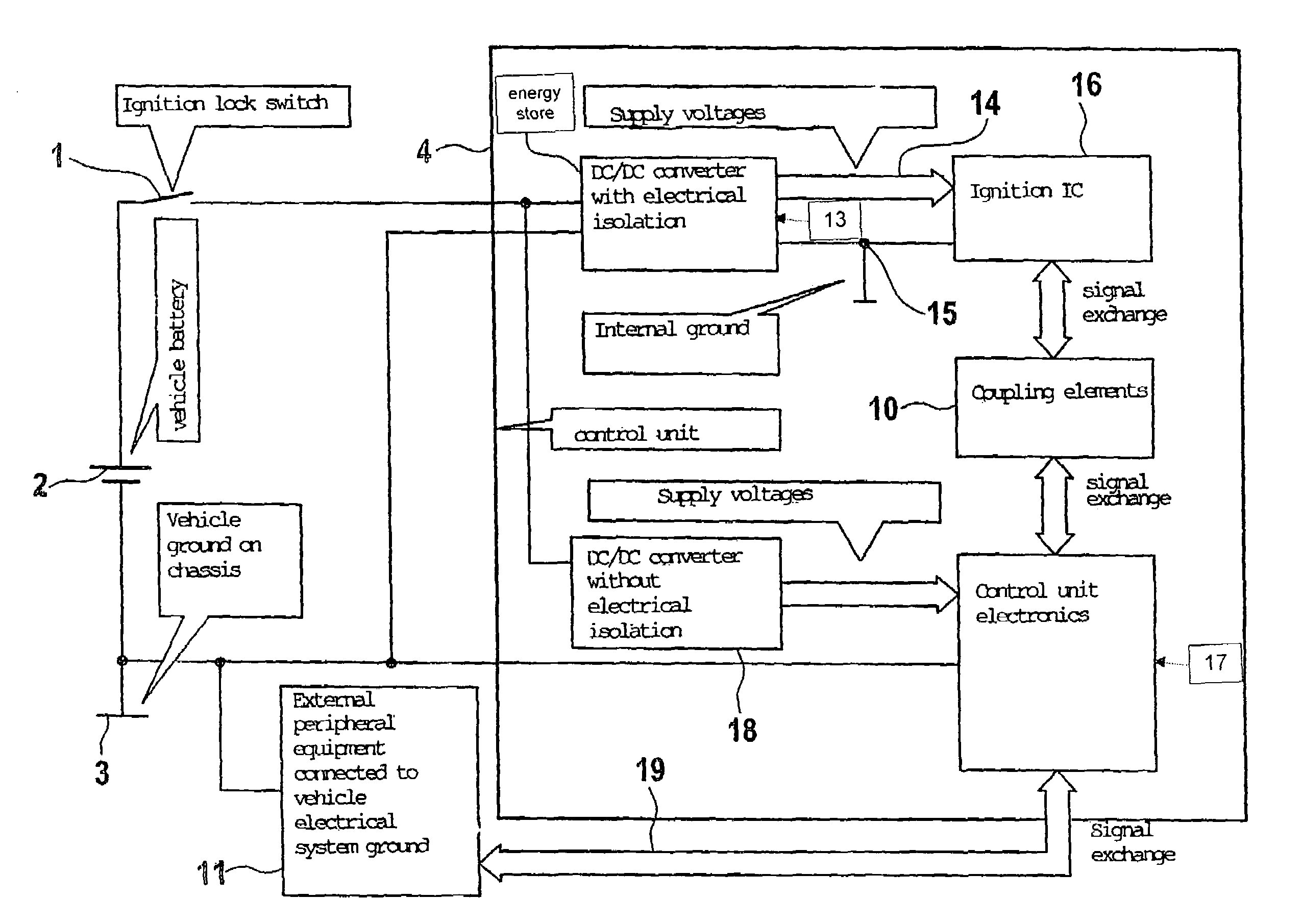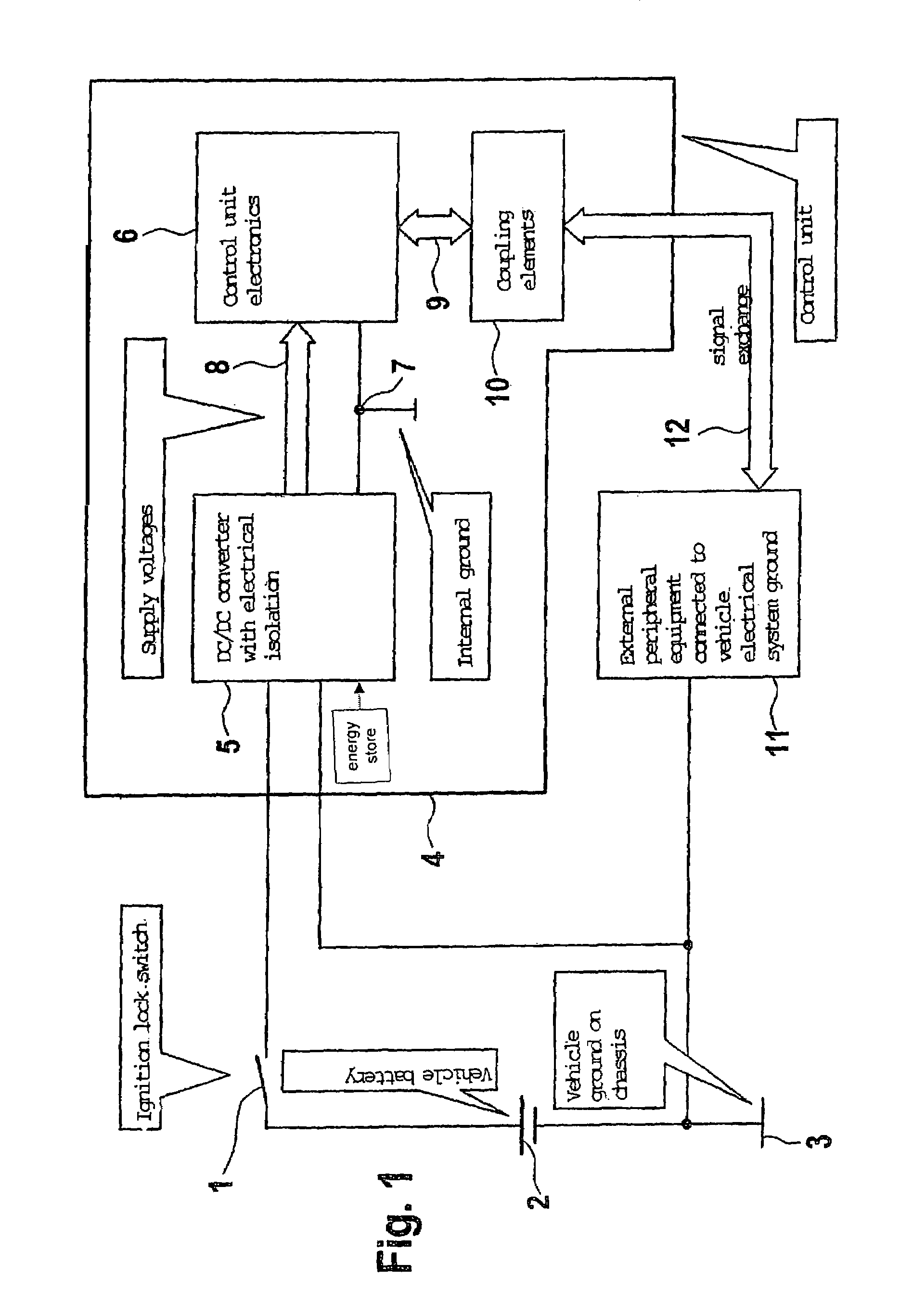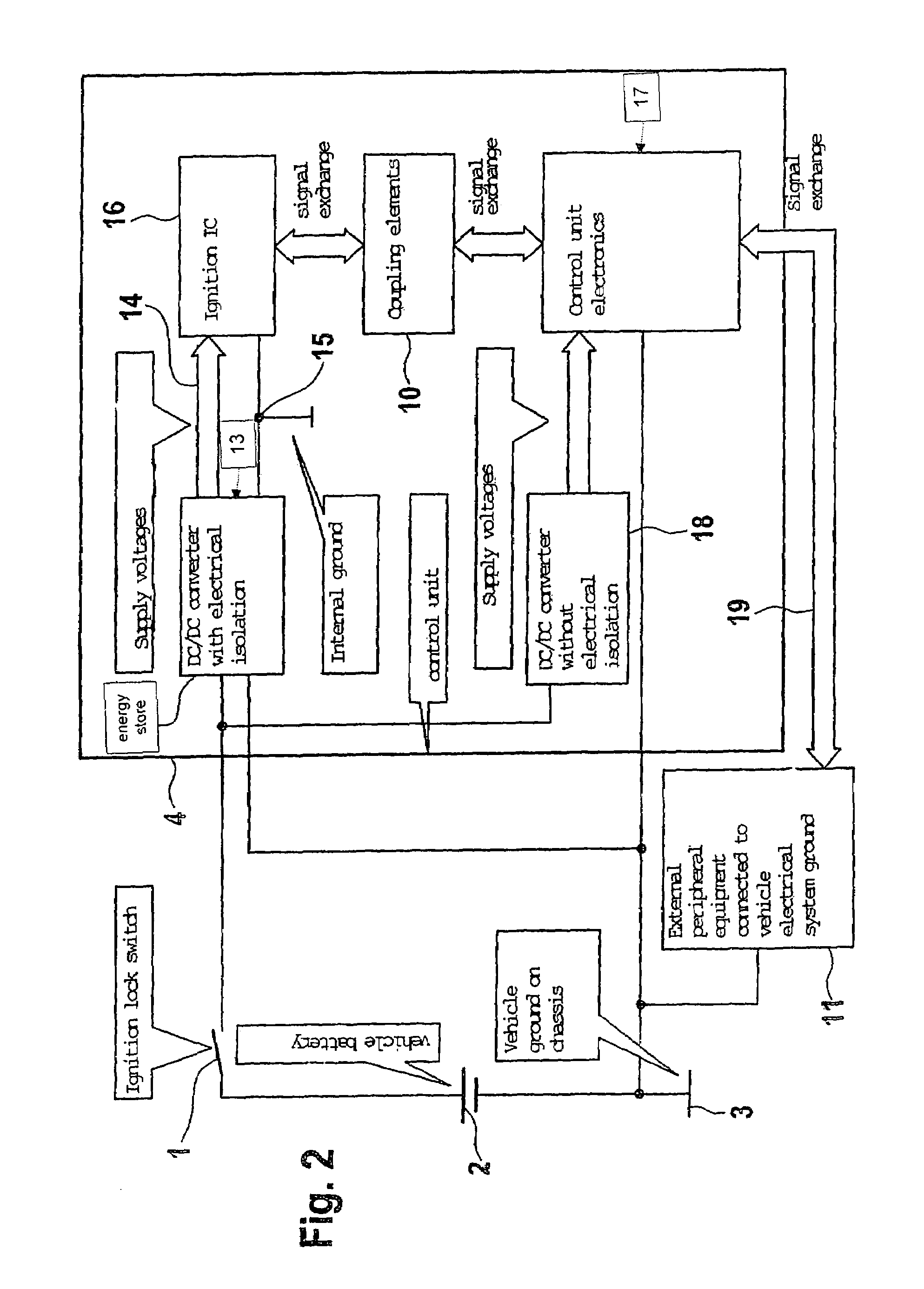Control unit in a vehicle
a technology of control unit and vehicle, which is applied in the direction of electric devices, pedestrian/occupant safety arrangements, emergency power supply arrangements, etc., can solve the problems of low-impedance connection, difficult to guarantee, and unintentional triggering of restraint devices
- Summary
- Abstract
- Description
- Claims
- Application Information
AI Technical Summary
Benefits of technology
Problems solved by technology
Method used
Image
Examples
Embodiment Construction
[0014]In conventional airbag control units, the ground connection to the control unit supply is established either via a separate ground line or via a conductive connection of the printed circuit board ground to the metal control unit housing which is conductively connected to the vehicle ground. In both methods, a connection of the lowest possible impedance is required to avoid different potentials of the printed circuit board ground relative to the vehicle ground. For this purpose, especially the resistance of the separate ground line or the contact resistance of the metal control unit housing to the vehicle ground must be taken into account.
[0015]If there is no case of a fault, i.e., if there is no short circuit of the minus output stage to the vehicle ground, no short circuit of the plus output stage to the vehicle ground or an interruption of the connection to the vehicle ground, this will result in the following switching-on operation:
[0016]When closing the ignition lock switc...
PUM
 Login to View More
Login to View More Abstract
Description
Claims
Application Information
 Login to View More
Login to View More - R&D
- Intellectual Property
- Life Sciences
- Materials
- Tech Scout
- Unparalleled Data Quality
- Higher Quality Content
- 60% Fewer Hallucinations
Browse by: Latest US Patents, China's latest patents, Technical Efficacy Thesaurus, Application Domain, Technology Topic, Popular Technical Reports.
© 2025 PatSnap. All rights reserved.Legal|Privacy policy|Modern Slavery Act Transparency Statement|Sitemap|About US| Contact US: help@patsnap.com



